That Fit Friend is supported by its readers. I [Jake Boly] run this site myself and buy the gear I review. If you purchase through my site, I may earn commissions on sales, read more here!
Table of Contents+
- Best Men's Shoes With Ankle Support
- Best Women's Shoes With Ankle Support
- Best Shoes With Ankle Support for Wide Feet
- Best Shoes for Ankle Support and Functional Fitness
- Best Shoes With Ankle Support for HIIT
- Are Cross-Training Shoes Supportive?
- What Makes a Good Ankle Support Cross-Training Shoe?
- What Is the Cause of Weak Ankles?
There are countless shoes on the market that offer ankle support. If you’re working out and need additional ankle support, then you’ll want to consider options that have deeper or more rigid boot constructions.
Whether you want a low-profile shoe with ankle support or a high-tops for training there are so many options that can work for different training styles if you spend a little time researching your best options.
When reviewing cross-training shoes, I constantly make categories where shoes work well in the context of performance and fit asks. All of the shoes featured in this list do a good job of providing additional boot support for training.
I (Jake) run That Fit Friend by myself and it’s an independent resource without outside influence from retailers. I buy the products I review to keep my content as objective as possible. I want skin in the game, too!
My Favorite Picks for Ankle Support
- Best Men’s Shoes With Ankle Support: Adidas Dropset Trainer 3
- Best Women’s Shoes With Ankle Support: TYR CXT-2 Trainer
- Top Shoe for Ankle Support and Wide Feet: Nike Metcon 9
- Best Low-Top Shoe With Ankle Support for Functional Fitness: RAD ONE V2
- Best High-Top Shoe With Ankle Support for Functional Fitness: NOBULL High-Top Trainer
- Favorite Shoes With Ankle Support for HIIT: Reebok Nano X5
Best Men’s Shoes With Ankle Support: Adidas Dropset Trainer 3
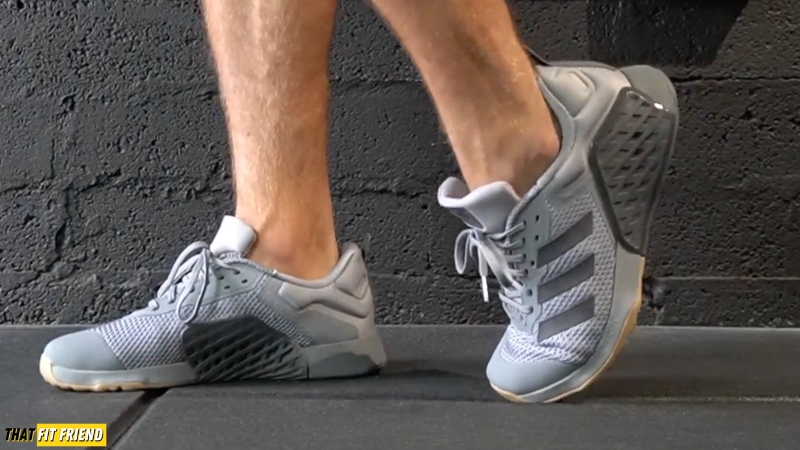
- Removable Insole: Yes
- Sizing: True to Size
- Dropset Trainer 2: Read My Review
The Adidas Dropset Trainer 3 can be a great option for guys with the need for additional ankle support in their trainers. This shoe’s boot has a nice level of rigidity and it has a nice “locked-down” feeling when training. I often liken the Dropset models to traditional weightlifting shoes because they feel so planted and stable when training.
In the Dropset 3, you have a rigid internal heel counter and the boot comes up pretty far on the ankle. For this reason, I like recommending them for guys with all types of foot and ankle anatomies. They’re kind of my failsafe pick for the dudes who are not sure what shoe they want specifically but want something stable and consistent.
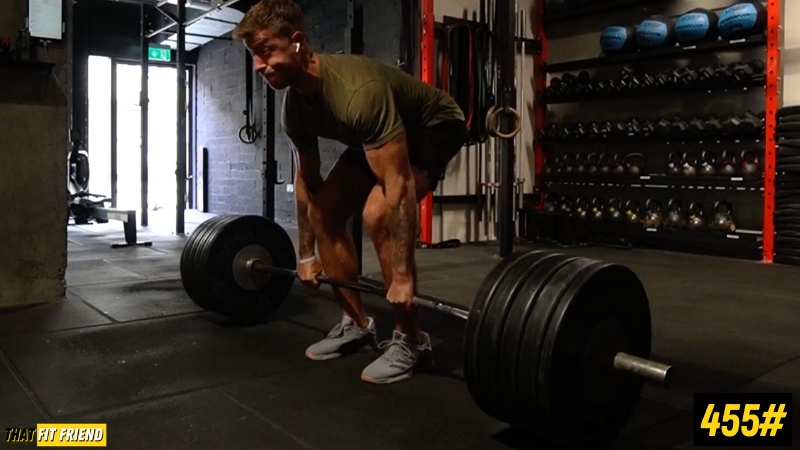
The dual-density midsole is great for blending lifting with athletic-style workouts. If you’re someone who likes to push heavy squats and deadlifts then add plyometrics and similar exercises to your sessions you’ll like this shoe. I’ll typically rock this shoe when I’m doing workouts that blend exercises like squats, cleans, and box jumps.
If you train like an “athlete” every week and you like additional boot support, then it’s tough to fault the Dropset Trainer 3’s performance. This shoe has a bias for lifting and will work well for your heaviest sessions.
Women’s Pick for Ankle Support: TYR CXT-2 Trainer

- Removable Insole: Yes
- Sizing: True to Size
- TYR CXT-1 Trainer: Read My Review
The TYR CXT-2 Trainer can be a great pick for women who need ankle support for things like lifting, cross-training, and versatile workouts. This shoe’s boot has a nice rigid cup to it, which is great for additional lock-down support. The boot has a rigid internal cup and there’s a good degree of padded mesh around the boot, too.
On top of its ankle support, the CXT-2 Trainer also tends to fit women’s foot anatomies well, and they have a wide option available. Outside of its ankle support, the CXT-2 also has a good degree of medial and lateral sidewall support with a bit of arch, too. They’re a good option if you like more supportive shoes in general.

Another performance feature of the CXT-2 Trainer is that it has a slightly higher 7mm heel-to-toe drop compared to its peers. This can be great for women who need a shoe with a little more heel to support lower-body exercises like squats and thrusters.
The Surge NRG foam midsole in this shoe walks a fine line between being stable for heavy training but responsive enough for HIIT and explosive exercises. The takeaway: This shoe is a good “all-arounder” for women needing ankle support in the gym.
Pick for Ankle Support and Wide Feet: Nike Metcon 9
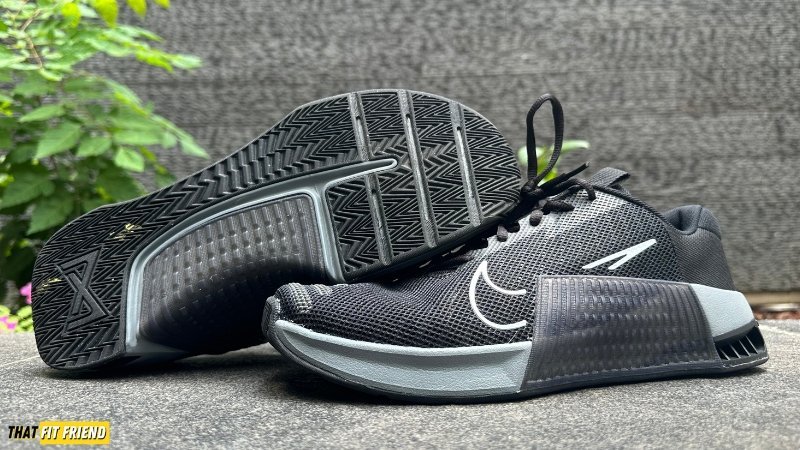
- Removable Insole: Yes
- Sizing: True to Size
- For More Info: Read My Review
The Nike Metcon 9 can be a good option for anyone needing ankle support with a slightly wider midfoot and toe box. This shoe’s boot cup is pretty rigid and it does a good job locking down the heel when lifting and training.
In addition, the TPU layer at the base of the heel helps to contribute to giving a more “supported” feeling for the ankles when doing multi-directional exercises and single-leg work.

I like the dual-density midsole in this shoe for lifting and they’ve done a great job accommodating my 515 lb deadlifts and 275 lb walking lunges. This is definitely a trainer that I’d give a lifting bias to.
In the context of CrossFit and cross-training, the Metcon 9 also does a pretty good job. I don’t love the TPU plate for WODs and sessions where I’m running a lot or jumping. I’d look into the TriBase Reign 6 if you need width and versatility.
Low-Top Pick for CrossFit and Ankle Support: RAD ONE V2
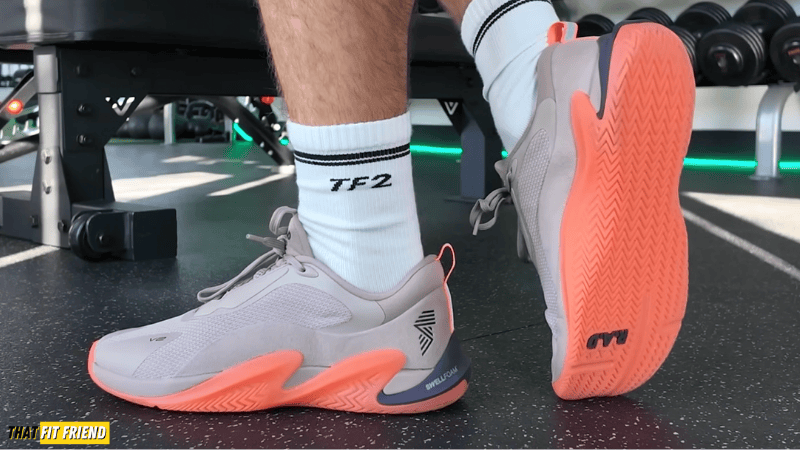
- Removable Insole: Yes
- Sizing: True to size should be a safe call for most.
- RAD ONE: Read My Review
The RAD ONE V2 can be a really good option to explore if you need that CrossFit-focused shoe that also has nice ankle support. The boot of this shoe has a nice structure, and the platform has a more planted feel to it when training. You notice this a lot when doing things like burpee box jump over or burpee over a dumbbell. They feel supportive and plated so you never feel “wobbly” when training.
The platform of the V2 also feels a bit wider compared to the V1, which gives this shoe a nice boost for lifting, in my opinion. There’s a little less toe spring, too, so when deadlifting, squatting, and cleaning in WODs, you get a little more ground contact in these shoes.
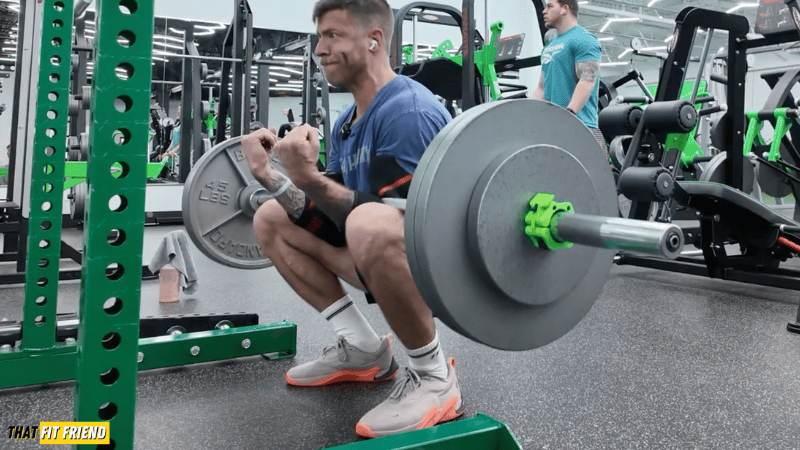
In the context of CrossFit, this model is what I would describe as an “all-in-one” style shoe. They perform well for heavy lifting and don’t beat your feet up when tackling workouts that include short runs and a lot of jumping.
The Swellfoam midsole and wave outsole wrap around this shoe also help prolong this model’s durability and rope climbing performance. I find that the wave construction gives you a little more support laterally and medially, too, a nice perk when you consider the ankle. For a low-top CrossFit shoe with ankle support, it’s really hard to fault the RAD ONE V2’s performance.
High-Top Pick for CrossFit and Ankle Support: NOBULL High-Top Trainer

- Removable Insole: Yes
- Sizing: True to Size
- NOBULL High-Top Trainer: Read My Review
If you’d rather have a high-top shoe with ankle support for functional fitness, then the NOBULL High-Top Trainer is a good option to explore. This model’s boot and upper construction help provide a nice level of ankle support.
The SuperFabric upper in this shoe is pretty rigid, so if you crank the laces tight, then you’ll get a lot of support around the ankle when training. Plus, this shoe features an internal heel cup which is nice for providing additional ankle support.
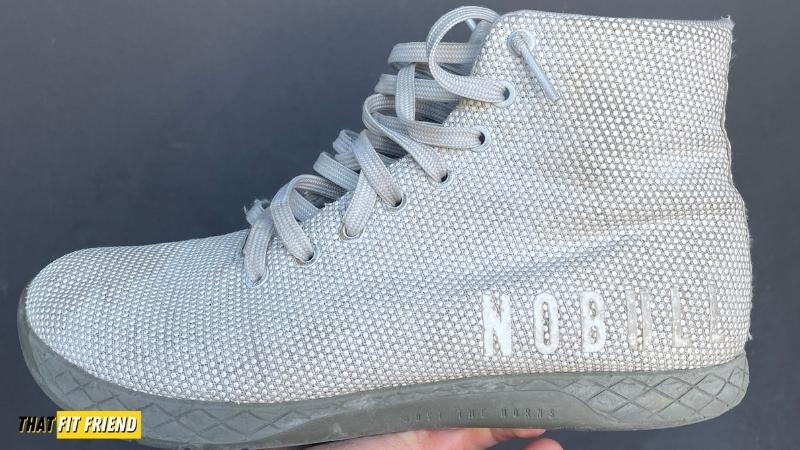
In the context of CrossFit, the NOBULL High-Top Trainer has two key performance areas going for it. First, is this model’s durability. I’m going two years strong with my model and they’re still holding up pretty well despite some outsole fading.
Second, this model provides a high degree of stability for heavy training, which is great for those who want this model for both lifting and CrossFit workouts. It’s a good all-in-one style high-top shoe for CrossFit and heavy training.
Pick for Ankle Support and HIIT: Reebok Nano X5
- Removable Insole: Yes
- Sizing: True to size.
- Reebok Nano X4: Read My Review
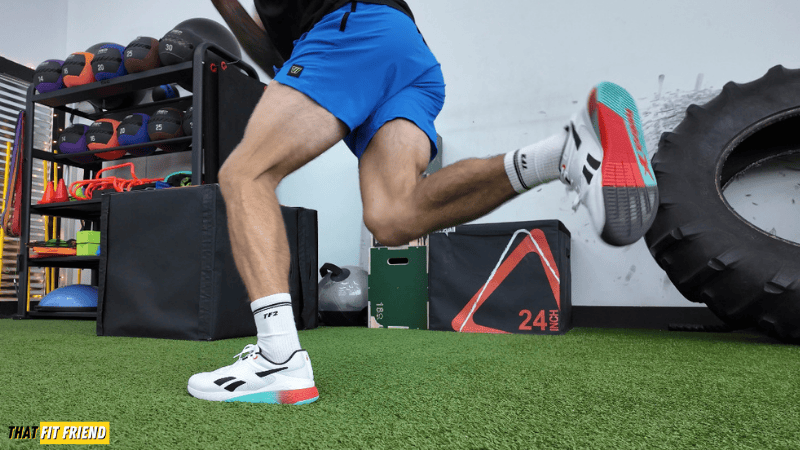
The Reebok Nano X5 delivers a strong performance for anyone needing a bit more structure in their boot for HIIT workouts and classes. I like the lockdown of this shoe when doing lateral and explosive work, and I think if you strive off of having a little more structure to your shoes, then you’ll enjoy how these perform.
Compared to the Nano X4 — which was a good shoe, don’t get me wrong — the Nano X5 is a big upgrade, in my opinion. Three things make this shoe better for training, and keep in mind, all of these add onto the ankle support benefit and point above. First, the Dual-Response midsole is the star player of this shoe. This midsole offers a really good blend of versatility and stability for all types of training.
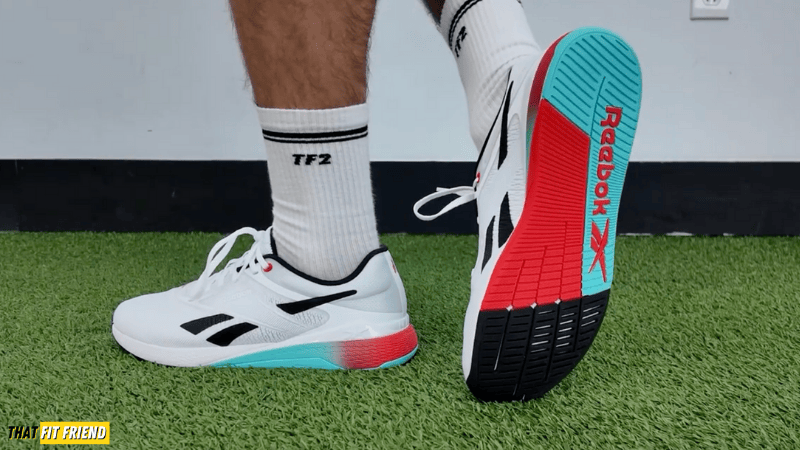
For plyometrics, the forefoot moves really well, and you get a good degree of ground feedback in these. They’re also a stable enough shoe to train well over 400 lbs and hit heavy machine work. The second thing to like revolves around this shoe’s fit. This model fits wider without feeling like “too much,” so you get good lockdown in them overall. During multi-directional work, incline walks, and short runs, I never have issues with this model feeling loose while training.
The last thing to enjoy about this shoe is the breathability of its upper. The Flexweave feels lightweight and breathable in most training settings. Factor in this with the lockdown and you have a solid blend of features for a shoe that can work for a little bit of everything in the gym while giving you some solid ankle support.
My Buying Tips
Buying Tip 1 — Consider the Boot of the Trainer
With any shoe that has ankle support, you want to make sure its boot has a rigid cup to lock down your ankle. For workout shoes, this will come in the form of an internal cup or reinforced external layers.
For example, you can see the additional ankle support on some models, which makes it easy to assess if they’d be good in this context. However, you can’t tell unless you try them on or check out reviews.
Tip 2 — Midsoles Matter, Too!
Once you’ve narrowed down the shoes with ankle support that will work for you it’s time to consider the midsole densities of those picks in relationship to how you train.
If you like to lift heavy, then you’ll want to consider options that have denser midsole materials. You can assess this component by reading reviews and seeing what others have said about the shoe’s stability.

Tip 3 — Don’t Forget to Train Your Ankles, Too
Stability shoes and shoes with additional ankle support are great for allowing you to perform strongly without setbacks but don’t forget to also train your ankles strategically to build the tissues around them.
For example, shoes are great for supporting your performance, however, it’s important to also expose yourself to situations sans your shoes to ensure you’re building ankle strength in isolation.
Are Training Shoes Supportive On Their Own?
When discussing the topic of training shoes being supportive, it can be better to define what exactly you’re looking for when seeking support in training shoes. For example, are you looking for arch support, ankle support, or general support for lifting?
All of these support questions can be important to consider because if you can better define what you want out of your cross-training, then you can find and use models that match your specific training and anatomical wants and needs.

In the case of this article, we’re talking about ankle support specifically. When it comes to ankle support, not every cross-training shoe will provide similar levels of ankle support.
Construction aspects like boot height, external heel clips, and internal heel cups can all play a role in the level of ankle support a cross-training shoe will provide. Typically for ankle support, you’ll want cross-training shoes that have more rigid heel and boot construction.
These construction elements will feed into a shoe’s ability to lock down the foot and provide ankle support, stability, and motion control when doing things like lifting, CrossFit workouts, HIIT, and explosive athletic-style training.
What Qualifies a Shoe to Have Ankle Support?
In the case of working out and ankle support, you’ll want shoes that have a high degree of stability with more rigid midsole materials and boot constructions that assist with motion control and ankle support.

The blending of these two characteristics will help ensure the cross-training shoes in question support those with ankles that may lack adequate strength to support the demands of cross-training.
It’s also important to consider that different athletes and lifters may respond differently to certain pairs of cross-training shoes. Anatomical differences and varied strength levels can influence what cross-training shoes with ankle support will be best for you.
What Is the Cause of Weak Ankles?
There can be multiple reasons why someone may have weak ankles. Outside of genetic components that can influence ankle strength, lower-body injuries can also lead to weak ankles.
More specifically, if you injure something like your knee and you’re not putting your body’s full weight on the injured leg for an extended period, then you can run into some loss of strength in the ankle.

This is due to the lack of daily stress that you’re placing on the joint. The lack of movement through the ankle’s normal range of motion in addition to the lack of loading can cause muscles to atrophy and become a bit weaker over time along with the tissues surrounding the ankle.
In the case of injuries, they happen and they’re not the end of the world. If you can get ahead of knowing that your ankles may have become weaker due to a lower-body injury, then you can use the correct gear and program to help you get back to your normal strength levels.

For example, if you know your ankle(s) may have lost strength, then using a shoe with more ankle support to help you transition and rebuild strength can be a really good strategy call.
Takeaway Thoughts
There are multiple reasons why athletes and lifters may opt for shoes with ankle support. With countless options on the market that will work for different contexts, there’s likely a solid shoe with ankle support for you.
Whether it’s your personal preference or a strategy call to help you ease back into training while improving ankle strength slowly, it can be a good idea to look into models that will better fit your training needs and wants.
If you have additional questions about the shoes with ankle support featured in this article, drop a comment below or reach out to me personally via Instagram (@jake_boly and @that_fit_friend).





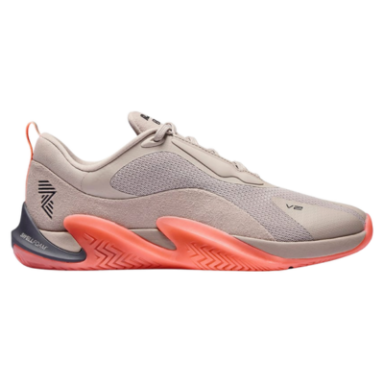


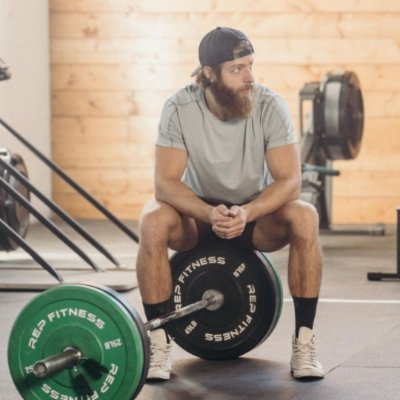



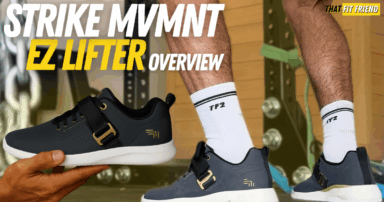
Add a Comment